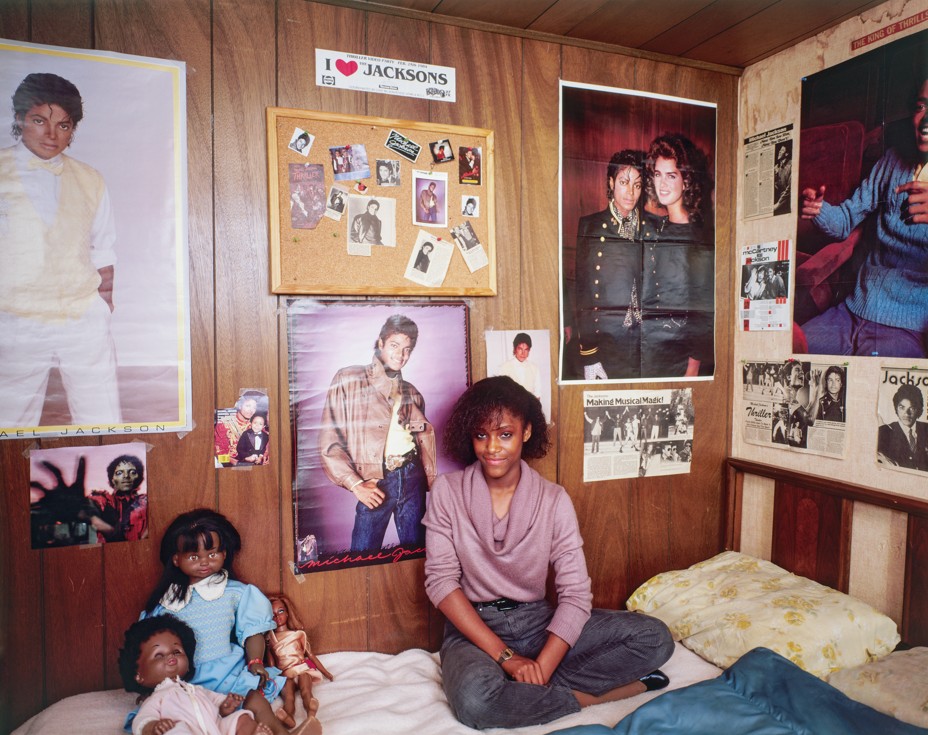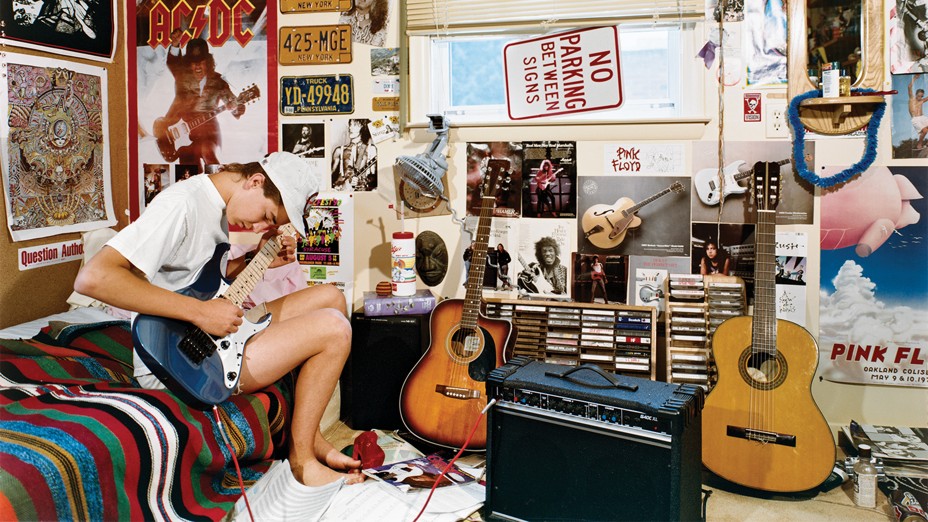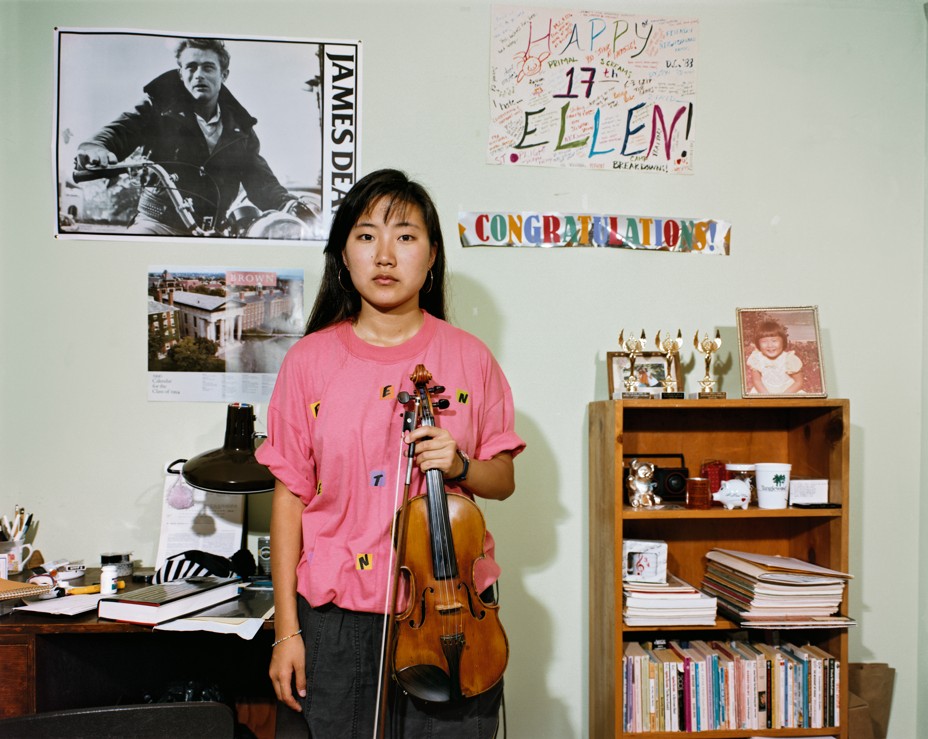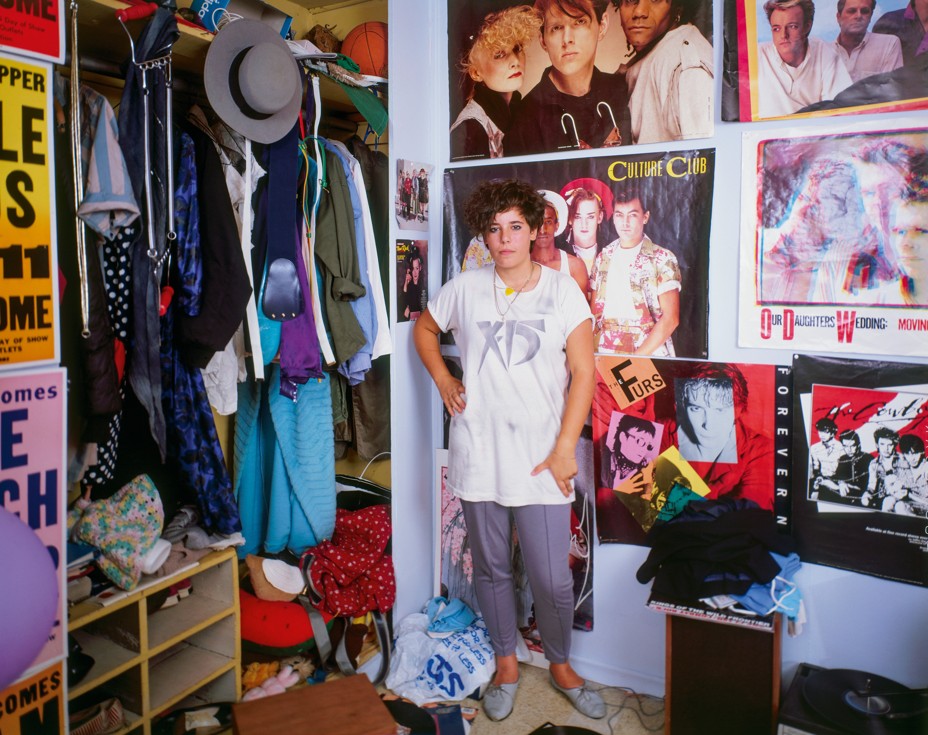Photographs by Adrienne Salinger
In the 1980s and ’90s, Adrienne Salinger photographed American teenagers in their natural habitat: their bedroom. Salinger was fascinated by the way these spaces reflected the personalities of their inhabitants. In an era before smartphones and social media, teenagers used the walls of their room to demonstrate their good taste in hair bands and hip-hop groups, commemorate their accomplishments, and construct their identity. These spaces, Salinger wrote in her 1995 book, In My Room, were “the repository for our memories and the expressions of our desires and self-image.”
 Tracy, 15, Seattle, Washington, 1984
Tracy, 15, Seattle, Washington, 1984
 Jeff, 16, Fayetteville, New York, 1990
Jeff, 16, Fayetteville, New York, 1990
Salinger’s book, reissued this month, features portraits of dozens of teenagers. The images capture an inflection point between childhood and adolescence: Her subjects pose among stuffed animals and pinups, dolls and drug paraphernalia. In one image, a girl named Ellen stands beside a neat bookshelf, clutching a violin. On the wall behind her is a poster of James Dean astride a motorcycle—just below it, a brochure from Brown.
 Ellen, 17, Fayetteville, New York, 1990
Ellen, 17, Fayetteville, New York, 1990
 Christina, 15, Seattle, Washington, 1984
Christina, 15, Seattle, Washington, 1984
Most of the rooms Salinger visited—of rich and poor teens alike—were illuminated by a single light fixture at the center of the ceiling. She brought her own studio lights, which would frequently blow a fuse. As she set up her equipment, she and her subjects would talk, often for hours. Then she would take a photograph, and the teens would see their room—and themselves—in a new light.
Photos courtesy of Adrienne Salinger / D.A.P. This article appears in the September 2025 print edition with the headline “No Parents Allowed.”
From The Atlantic via this RSS feed


